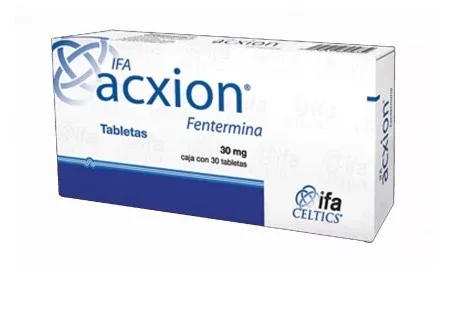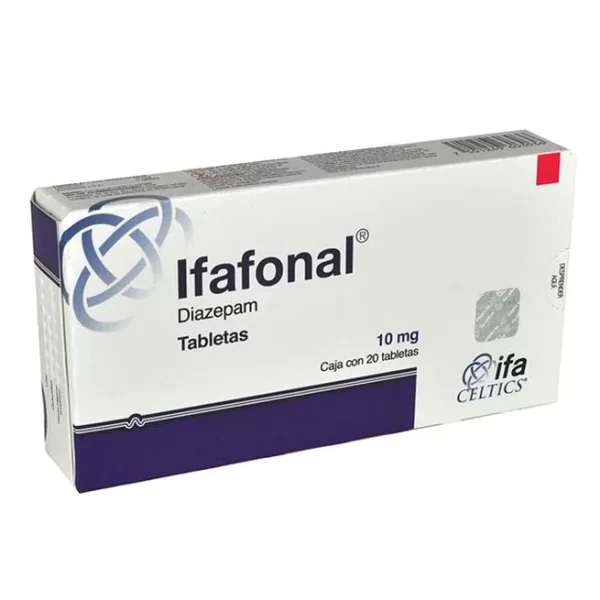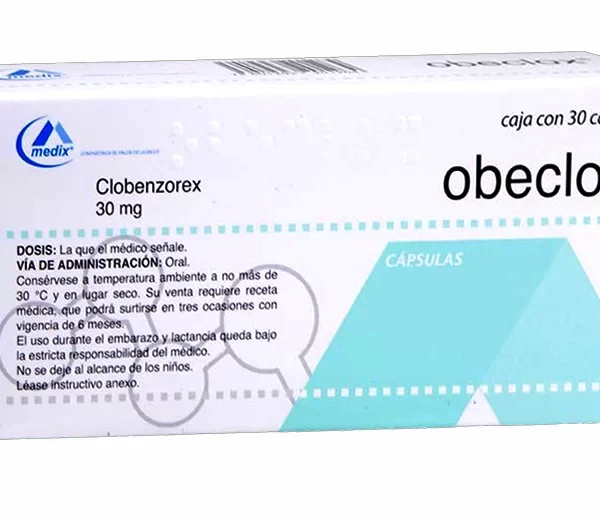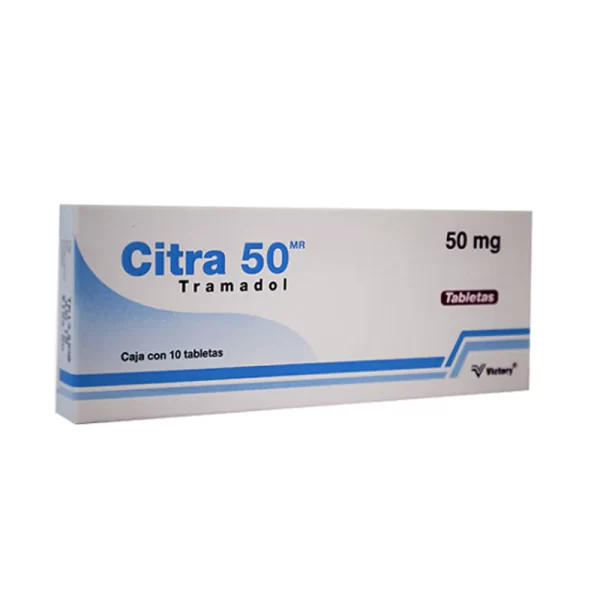Description
What is Tramadol?
Tramadol is an opioid analgesic – a powerful painkiller used to treat moderate to severe pain. This article aims to provide a comprehensive overview of Tramadol, particularly the 100mg dose in a capsule formulation. Understanding the medication you are taking is crucial for safe and effective treatment. Adiolol is the brand name of the medication in Mexico, so this description may use a double name for the drug, such as Adiolol Tramadol.
If this one does not meet your needs or interests, you may want to look at Tylex CD 500mg/ 30mg 30 Caps (Paracetamol/Codeine). Please visit this link for further information on our Pain medicine.
Understanding Tramadol
Belonging to a class of drugs known as opioid analgesics, Tramadol acts in the central nervous system to relieve pain. First introduced in the 1970s by the pharmaceutical company Grünenthal GmbH, it’s now a commonly prescribed medication worldwide. Unlike common nonsteroidal anti-inflammatory drugs (NSAIDs), Tramadol 100 is typically used for pain that’s more severe or not adequately controlled by other medications.
Detailed Information on Tramadol 100mg Capsules
Tramadol 100mg capsules are often a light color, such as white or light yellow, and are imprinted with their potency (100mg). This specific dosage means each capsule contains 100 milligrams of Tramadol, which provides a powerful dose of this pain-relieving medication.
How Tramadol Works
The human body naturally sends pain signals through the nervous system. Tramadol works by changing the way your brain senses pain. Specifically, it binds to opioid receptors in the brain and inhibits the reuptake of neurotransmitters like serotonin and norepinephrine. This dual mechanism not only decreases the perception of pain but also has mild antidepressant effects, potentially enhancing its pain relief effects.
When administered as a 200 mg extended-release tablet, the bioavailability of the drug is about 85 to 90% relative to a 50 mg immediate-release tablet taken every six hours. Consuming tramadol extended-release tablets with food reduces the maximum concentration (Cmax) and systemic exposure of tramadol by 28% and 26%, respectively, especially when eaten with high-fat foods, compared to when fasting. The average maximum time (Tmax) increases from 14 hours while fasting to 17 hours when taken with food. Peak plasma concentrations of tramadol are observed around 12 hours after consuming an extended-release tablet, while peak plasma concentrations of the active metabolite M1 are reached approximately 15 hours post-dose of the sustained-release oral dose. Steady-state concentrations are reached after four days of consuming extended-release tablets. The pharmacokinetic parameters of the extended-release tablets are almost dose-proportional over a dose range of 100 to 400 mg in healthy patients. However, the systemic exposure post a 400 mg dose of tramadol was 26% more than anticipated based on the systemic exposure following a 200 mg dose.
Tramadol disperses quickly throughout the body, with an initial distribution half-life of 6 minutes, followed by a slower distribution half-life of 1.7 hours. The volume of distribution of tramadol post oral administration is 2.7 L/kg, signifying high tissue affinity. Tramadol’s protein binding capacity is minimal (20%). Tramadol is widely distributed, crosses the placental barrier, and appears in small quantities in breast milk.
Tramadol undergoes metabolism in the liver through N- and O-demethylation, glucuronidation, or sulfation. The metabolite O-desmethyltramadol is pharmacologically active and its production depends on the CYP2D6 isoenzyme of cytochrome P450, which exhibits a genetic polymorphism.
The main route of tramadol excretion is via the urine, predominantly as metabolites. Post oral administration, the elimination half-lives are 7.9 and 8.8 hours for tramadol and its metabolites, respectively.
In patients with renal or hepatic dysfunction, a reduction in dosage is required. When creatinine clearance is less than 80 mL/min, tramadol’s half-life increases 1.5 to 2 times compared to healthy patients. Similarly, in patients with liver dysfunction or cirrhosis, the half-life increases 2 to 3 times.
Tramadol, a synthetic analgesic, acts centrally. Although its exact mechanism of action hasn’t been fully elucidated. Animal studies suggest at least two complementary mechanisms: the binding of the drug and its metabolite M1 to opioid receptors and weak inhibition of norepinephrine and serotonin reuptake.
Tramadol’s dual mechanism for pain relief is unique. Its central activity as an opioid receptor agonist exerts an analgesic effect through the binding of the drug and its metabolite O-desmethyltramadol (M1) to the μ receptors. The analgesic contribution of tramadol and M1 in humans depends on the plasma concentrations of each. Data regarding the efficacy of tramadol for pain in poor metabolizers versus CYP2D6 extensive metabolizers are limited. The data, gathered from randomized, double-blind, crossover studies, suggest that orally administered tramadol 2 mg/kg produces a greater analgesic effect, especially after the first 4 hours in rapid metabolisers, while the analgesic effect in slow metabolisers is milder, but lasts up to 10 hours post-dose. Opioid receptors, coupled with G proteins (guanine-nucleotide-binding protein), act as receptors and modulators of the function, both positive and negative, of synaptic transmission. G proteins activate effector proteins. Opioid agonists decrease intracellular cAMP by inhibiting adenylate cyclase, which modulates the release of pain transmitting neurotransmitters such as substance P, GABA, dopamine, acetylcholine, and norepinephrine. The exact mechanism of opioid agonists is not well understood, as they incite both inhibitory and stimulatory processes.
Alongside its central activity on opioid receptors, tramadol also inhibits the reuptake of norepinephrine and serotonin in the central nervous system, consequently inhibiting pain transmission in the spinal cord. The blockage of monoamine reuptake, akin to the action of monoamine oxidase inhibitors, is a significant contributor to tramadol’s analgesic effect.
Tramadol: uses
Tramadol 100mg is typically prescribed for moderate to severe pain, either acute or chronic. It might be used for post-surgical pain, severe osteoarthritis, or other conditions causing significant discomfort. However, it’s essential to remember that Tramadol pill should only be taken under a healthcare professional’s guidance, who will determine the appropriate dosage based on the patient’s condition and response to therapy.
Tramadol: dosage
Tramadol dosage varies depending on individual health conditions, severity of pain, response to treatment, and other medications a patient may be taking. Therefore, it is essential to take Adiolol Tramadol 100mg exactly as prescribed by your healthcare provider. Here’s a general guideline for dosages:
Tramadol Immediate-release tablet:
-
For adults (18 years and older): The typical daily dose is 50 to 100 milligrams (mg) every 4 to 6 hours as needed for pain. The dose could be increased by your doctor to up to 400 mg per day if needed to control pain.
-
For seniors (65 years and older): The liver and kidneys of older adults may not work as well as they used to, which can lead to your body processing drugs more slowly. As a result, more of a drug stays in your body for a longer time, raising your risk of side effects. Seniors 65 years and older might start at a lower dose of 50mg per day. Your doctor will adjust your dose depending on how you respond to treatment.
Tramadol Extended-release tablet:
-
For adults (18 years and older): The typical daily dose is 100 mg once a day. This could be increased by your doctor to a maximum of 300 mg per day.
-
For seniors (65 years and older): Because seniors are more likely to have decreased renal function, care should be taken in dose selection, and it may be useful to monitor renal function.
Adiolol Tramadol 100 mg is not recommended for children under the age of 12. And for adolescents (12-18 years old), usage is restricted to those for whom alternative treatment options are inadequate, ineffective, or not tolerated.
Please remember, it’s important not to exceed the prescribed dose and to avoid combining Tramadol with other substances, particularly those that may depress the central nervous system.
Tramadol can cause physical and psychological dependence, particularly when taken for extended periods or in higher doses than prescribed. Therefore, when discontinuing the drug, it’s important to do so gradually and under medical supervision to avoid withdrawal symptoms.
Always consult your healthcare provider or pharmacist if you have any questions regarding your medication.
Tramadol: Side Effects
Like all medications, Tramadol 100 may cause side effects, although not everyone experiences them. Common side effects include nausea, vomiting, constipation, lightheadedness, dizziness, or drowsiness. If any of these effects persist or worsen, patients should notify their doctor or pharmacist promptly. It’s also essential to seek immediate medical attention if severe side effects occur, such as slow or irregular heartbeat, severe stomach or abdominal pain, or changes in mental status.
Precautions and Contraindications
Before starting Tramadol 100 mg, patients should inform their doctor of their medical history, particularly of any brain disorders, breathing problems, kidney or liver disease, or personal or family history of substance use disorder. This medication may interact with other drugs, so it’s crucial to provide the healthcare provider with a list of all the medications being taken.
Tramadol is an effective medication for managing moderate to severe pain, but it is not suitable for everyone. Here are some contraindications for the use of 100 mg Tramadol:
- Allergy or hypersensitivity: Patients who have a known allergy or hypersensitivity to Adiolol Tramadol or any of its components should not take it.
- Acute intoxication: Tramadol 100 should not be used in people who are intoxicated with alcohol, hypnotics, centrally acting analgesics, opioids, or psychotropic drugs.
- Severe respiratory depression: Patients with severe respiratory depression, where the respiratory centers in the brain are not adequately controlling breathing, should not take Tramadol 100mg tablets.
- Severe asthma or breathing problems: Patients with severe or uncontrolled asthma or other breathing problems should not use Tramadol pills. It can slow or stop breathing, especially when starting to use this medicine or whenever the dose is changed.
- Monoamine Oxidase Inhibitors (MAOIs): Tramadol should not be administered to patients who are currently taking MAOIs or who have taken them within the last 14 days due to potential for serious reactions.
- Gastrointestinal obstruction: Patients with stomach or intestinal blockage, including paralytic ileus, should not use medication.
- Children under 12 years old
- Pregnancy and Breastfeeding: Tramadol can pass into breast milk and may harm a nursing infant. It should not be used during pregnancy unless the potential benefit justifies the potential risk to the fetus.
- Liver or kidney disease: Tramadol 100 mg is processed by the liver and excreted via the kidneys. Patients with severe liver or kidney disease may need dosage adjustments or may not be able to take Tramadol at all.
- Post-operative management in children: medicine should not be used for postoperative pain management in children who have undergone tonsillectomy or adenoidectomy.
- These are just some contraindications. Always consult a healthcare provider to determine if Tramadol is safe and appropriate for individual health conditions and circumstances.
Frequently Asked Questions
Many patients wonder about the potential for addiction with Tramadol (Mexico). While there is a risk, it’s generally low when the medication is used properly, under a healthcare professional’s supervision. Patients should also know that abruptly stopping Tramadol can lead to withdrawal symptoms – therefore, the dosage should be gradually reduced under a doctor’s instructions. Remember, individual queries and concerns should always be discussed with a healthcare provider to ensure safe and effective use of Tramadol.
Taking medication (Adiolol 50 mg) for cancer patients
One in two or three people who develop cancer experience pain that is moderate to severe. The pain tends to get worse as the cancer progresses. Mexican tablets Adiolol Tramadol Generic according to the rules of the “ladder of pain relief” are prescribed in the second stage – after the use of less toxic, but highly effective non-steroidal drugs (NSAIDs). It is a narcotic analgesic from the opium group, like codeine.
Contraindications adiolol tramadol 100 mg capsules
Hypersensitivity to the active substance or to other components of the Adiolol preparation.
- Acute alcohol intoxication;
- Acute poisoning with sleeping pills, analgesic or psychotropic drugs;
- Severe liver failure;
- Severe renal failure (creatinine clearance less than 10 ml / min);
- Epilepsy with frequent seizures;
- Pregnancy or lactation period;
- Children under 14 years of age.
The period of treatment with MAO inhibitors and the next 14 days after their cancellation.
The Mexican medication Adiolol is not used to treat opioid dependence.
Dosage and method of administration Adiolol 50 mg
The capsules and tablets contain a full single dose, taken regardless of food, and with unbearable pain syndrome, it is allowed to swallow two at once.
The dose and duration of treatment is determined by the doctor individually, based on the intensity of the pain syndrome. Inside, the usual initial dose for adults and children over 14 years old is 50 mg (again, in the absence of effect – after 30-60 minutes).
The daily dose of Immediate-release Adiolol should not exceed 8 capsules (400 mg).
The drug should not be used longer than the period justified from a therapeutic point of view. For patients with moderate impairment of liver / kidney function, as well as for the elderly, doses are selected individually.
Side effects of Adiolol
Not everyone knows that drugs can not only heal, but also cause adverse reactions in the body. According to the WHO definition, side effects of drugs include any reaction, harmful or undesirable for the body, that occurs when prescribing drugs for the treatment, diagnosis and prevention of diseases.
| Side effect frequency | Adverse reaction type from the use of Adiolol 50 mg |
| Very often | Nausea, headache, constipation, dizziness |
| Often | Sweating, vomiting, narrowing in the mouth, |
| Rarely | Diarrhea, itching, redness of the skin, decreased muscle activity, difficulty urinating, hallucinations, confusion, |
| Frequency unknown | Blurred vision, bloating, difficulty swallowing, increased blood pressure, hypoglycemia. |
If you experience any serious side effects, contact your healthcare professional immediately.
Medical advice: Do not take Adiolol without the advice of your healthcare professional. Dosages and method of administration are strictly prescribed by a specialist, remember that self-medication can seriously harm your health.
Withdrawal syndrome with Tramadol
Tramadol is one of the most common pharmaceutical drugs. These pills were popular in the 90s of the last century. Many drug addicts started with this drug and then switched to more powerful opioids. In patients with addiction to deprivation pills, epileptymorphic seizures occurred quite often, as a rule, due to growing tolerance and repeated overdoses. People who have been taking opioids for several months and then abruptly stopped developing withdrawal symptoms, which is expressed in general malaise and diarrhea. But the dose required to prevent withdrawal is much lower than the dose for pain relief.
Application of Adiolol Tramadol Generic during pregnancy and lactation
The appointment of tramadol is possible during pregnancy (II and III trimester) only under strict medical supervision if the benefit to the mother outweighs the risk to the fetus.
The FDA category of action on the fetus is C.
Special instructions
During treatment with Adiolol Tramadol, some precautions should be observed: refrain from driving a car and performing potentially hazardous activities that require increased attention or speed of mental and motor reactions.
Avoid busyness that requires concentration and coordination, as pain medications can make you dizzy.
What is adiolol tramadol?
Adiolol Tramadol is a centrally active opioid analgesic with a mixed mechanism. Helps to cope with severe chronic pain, regardless of the cause.
How to order adiolol?
The drug is sold by prescription in the United States. You can order adiolol capsules online at our pharmacy. In Mexico, the tablets are sold without a prescription.
Tramadol Dosage: Finding the Right Balance
When it comes to tramadol dosage, it is imperative to follow the healthcare provider’s instructions. The dosage of Adiolol Tramadol is usually determined based on the severity of pain and the patient’s response to the medication. It is crucial not to exceed the recommended dosage, as this can lead to adverse effects or dependency.
Understanding Tramadol Side Effects
As with any medication, it is important to be aware of potential tramadol side effects. Common side effects of Tramadol 100 include nausea, dizziness, constipation, and headache. In rare cases, severe side effects such as respiratory depression can occur. It is advisable to consult a healthcare professional if you experience any unusual or severe side effects.
Packaging and Pricing
Adiolol Tramadol 100mg comes in a pack containing 50 capsules. The packaging is secure and ensures the integrity of the medication. When it comes to the precio (price) of Adiolol Tramadol 100mg, it is competitively priced, making it an accessible option for many patients seeking pain relief.
Sourcing Tramadol from Mexico
Tramadol 100mg is sourced from Mexico, a country known for its high-quality pharmaceutical products. The medication adheres to stringent quality standards, ensuring its efficacy and safety. Sourcing tramadol from Mexico also allows for competitive pricing, making it an attractive option for patients around the world.
In Conclusion: Adiolol Tramadol 100mg as a Reliable Pain Relief Option
Whether in tablet or pill form, tramadol is a medication that has proven its worth in the realm of pain management. Tramadol 100mg pill, with their potent dosage and high-quality formulation, are an excellent option for those seeking effective pain relief.
However, it is important to use this medication responsibly and under the supervision of a healthcare professional. This ensures that you are using tramadol safely and effectively, and are aware of any potential side effects.
In the journey towards pain-free living, this medication can be a valuable ally. With its potent formulation and the backing of stringent quality standards from Mexico, it stands as a reliable option for managing moderate to severe pain.
As you consider incorporating Adiolol Tramadol 100mg into your pain management regimen, remember the importance of consulting a healthcare professional. This ensures that the medication is suitable for your specific health needs and that you are informed about the proper dosage and potential side effects.
In a world where pain can be a significant hindrance to quality of life, having effective pain management options is invaluable. Adiolol Tramadol 100mg white capsules offer a potent and reliable solution for those in need.
Tramadol: Allergy Symptoms
In some cases, may develop an allergy to Tramadol. The patient may feel symptoms such as:
- urticaria;
- difficulty breathing;
- sores in the mouth;
- rash;
- itchy eyes;
- seizures.
Although rare, symptoms should be reported immediately to doctors for emergency treatment. If you want to buy Tramadol online without a prescription, consult our pharmacist about dangerous interactions and contraindications.
Tramadol: Migraine dosage
Tramadol is prescribed for moderate to severe pain as a result of migraine attacks. The drug is taken in a dosage of 50-100 mg, every 4-6 hours, depending on the frequency and intensity of the pain.
The maximum daily dose is 400 mg. For better tolerance, start with small doses, 25 mg daily, and then gradually increase by 25-50 mg every 3 days, reaching 50-100 mg/day every 4-6 hours.
Does Tramadol cause diarrhea?
Tramadol does not affect intestinal peristalsis. In some cases, diarrhea occurs as an individual reaction to the drug in the form of side effects.
Side effects
Before buying Tramadol, it is important to read the instructions carefully, since the drug has contraindications.
The most common adverse reactions when using Tramadol hydrochloride are:
- Mental side: hallucinations, seizures, sleep disorders, anxiety, night terrors.
- Nervous system: dizziness, headache, change in appetite, tremors, respiratory depression, speech disorders
- Organs of vision: blurred vision.
- Cardiovascular system: tachycardia, bradycardia, arterial hypertension.
- Respiratory system: asthma, hiccups.
- Digestive system: nausea, vomiting, constipation, dry mouth.
- Skin: increased sweating, skin reactions (including rash, itching, erythema, urticaria).
- Musculoskeletal system: motor weakness.
- Urinary system: urinary disorders (difficulty in urination and urinary retention).
If any effects occur, it is significant to inform the doctor.
Tramadol and Ibuprofen
Long-term concomitant use of Ibuprofen and other NSAIDs increases the risk of developing “analgesic” nephropathy and renal papillary necrosis, the onset of terminal renal failure. Simultaneous long-term prescription of Ibuprofen in doses higher than recommended, as well as salicylates, increases the risk of developing kidney or bladder cancer.
You can buy Tramadol 100mg online at our pharmacy and quickly relieve yourself of excruciating pain.
Tramadol for leg pain
Tramadol is one of the opioids most used for osteoarthritis, which can cause leg pain. The drug does not cause bleeding from the stomach or intestines and does not disrupt kidney function, which can occur with other non-steroidal anti-inflammatory drugs (NSAIDs). Tramadol also does not affect the cartilage at the ends of the bones. But the drug does not reduce swelling and may not be effective with long-term use.
If you are looking for Tramadol at an online pharmacy, you can always visit our website for availability and cost. This is convenient, and you don’t have to search for medication or stand in line for a long time.
Can Tramadol be abused?
After three months of systematic use of Tramadol, persistent physical and mental exhaustion develops. There may be sudden mood swings from friendly and affable to irritable and even tearful.
Patients become distracted and lose interest in everything. Unreasonable headaches and emotional lability occur, which are hardly relieved by non-narcotic analgesics.
Tolerance to the drug increases sharply, and the use of the previous dose does not lead to the desired condition, which causes irritability, decreased appetite and sleep deterioration. Therefore, the single and daily dosage of the substance used slowly increases.
When Tramadol is taken systematically, a toxic encephalopathy develops, which in turn leads to a change in the patient’s personality. Periodic outbursts of anger, deceitfulness, self-centeredness, callousness to others appear a sense of empathy is lost.
There can be fatal outcomes due to Tramadol overdose, as tolerance increases and as a result, the dose of the substance used increases.
The withdrawal syndrome occurs in the absence of another dose of Tramadol and is characterized by more pronounced pain, psychological and mental suffering compared to withdrawal from other drugs. The pain syndrome comes to the forefront and is not well controlled, causing unbearable suffering.
At the peak of dependence, withdrawal psychosis may occur, more often in the evening and at night, and may be accompanied by fearful or aggressive hallucinations.
Does Tramadol cause fatigue?
The drug initially causes euphoria, followed by side effects such as weakness, apathy, drowsiness, fatigue, heart palpitations, and limb tremors.
Drug interactions of Tramadol with other drugs
Before you buy Tramadol 100mg online, tell your doctor what drugs you are taking and if there is any drug incompatibility.
- Tramadol is pharmaceutically incompatible with Diclofenac, Indomethacin, Phenylbutazone, Diazepam, Flunitrazepam, Nitroglycerin, and Midazolam.
- Tramadol increases the potency of alcohol and CNS depressants.
- The drug reduces the analgesic effect and duration of action of Carbamazepine and barbiturates. Prolonged use of these drugs develops cross-tolerance (an addiction that occurs when taking one substance, spreading to other drugs).
- Anxiolytics increase the effect of analgesics.
- MAO inhibitors, Furazolidone, Procarbazine, and neuroleptics can lead to seizures.
- When used together with Phenprocoumon, it may increase the anticoagulant effect.
- Concomitant use of opioids and sedatives such as benzodiazepines or drugs of similar action increases the risk of sedation and respiratory depression. This can result in coma and death.
Can you buy Tramadol online?
In our online pharmacy, you can order Tramadol online. We care about your comfort. If you are unable to visit a doctor or go to the pharmacy, you can buy Tramadol online from your home or office at your convenience.
Order safely and securely through our website. You can buy Tramadol online without a prescription, the cost of the drug includes a prescription from a specialist. It’s convenient, no need to specially make an appointment with a doctor.























Reviews
There are no reviews yet.